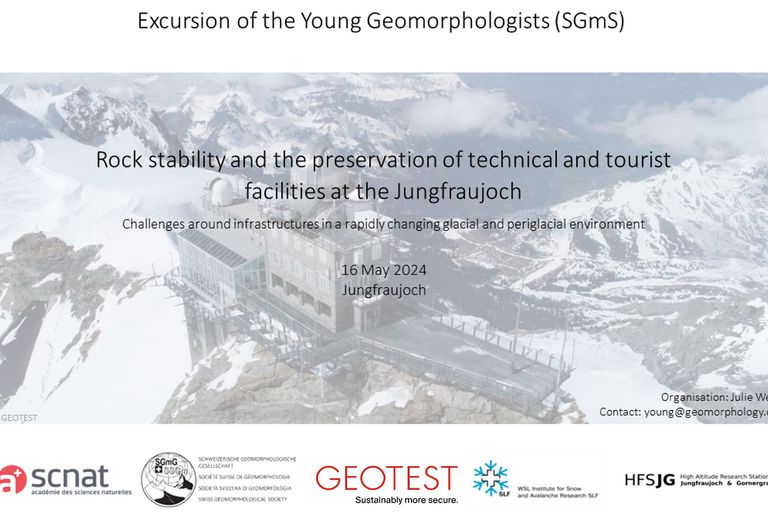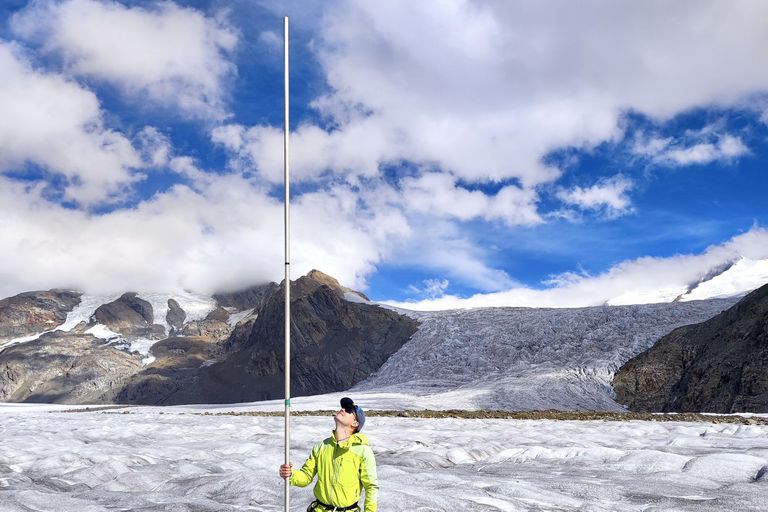Events, News, Publications

Excursion of the Swiss Young Geomorphologists (SGmS)
Rock stability and the preservation of technical and tourist facilities at the Jungfraujoch : challenges around infrastructures in a rapidly changing glacial and periglacial environment
Image: SSGm
Two catastrophic years obliterate 10% of Swiss glacier volume
One extreme year follows another. Glaciers in Switzerland lost 6% of their volume in 2022. However, 2023 saw 4% destroyed, representing the second largest decline since measurements began. The Swiss Commission for Cryosphere Observation of the Swiss Academy of Sciences reported that a total of 10% of the ice volume disappeared in only two years.
Image: Matthias Huss
«2022 war absolut aussergewöhnlich»
Matthias Huss ist der oberste Gletschervermesser der Schweiz. 2022 erlebte er ein Extremjahr: Die Eisschmelze und das Medieninteresse verzeichneten ein Allzeithoch. Die hochaktuellen Messungen erfolgen teils mit den gleichen Methoden wie vor hundert Jahren.
Image: Annette BoutellierThe Swiss Glaciers 2019/20 and 2020/21
Glaciological Report (Glacier) No. 141/142 about the Swiss Glaciers 2019/20 and 2020/21, under review by the Cryospheric Commission.
Image: GLAMOSDie Engadiner Blockgletscher gehören zu den 100 bedeutendsten Geo-Erbestätten weltweit
100 geologische Stätten aus aller Welt wurden von der International Union of Geological Sciences (IUGS) aufgrund ihrer Bedeutung für das Verständnis des Planeten Erde und seiner Geschichte ausgewählt. Darunter befinden sich als einziger Schweizer Standort die Engadiner Blockgletscher, die für die Dokumentation und Erforschung des Gebirgspermafrostes einzigartig sind.
Image: A. Cicoria